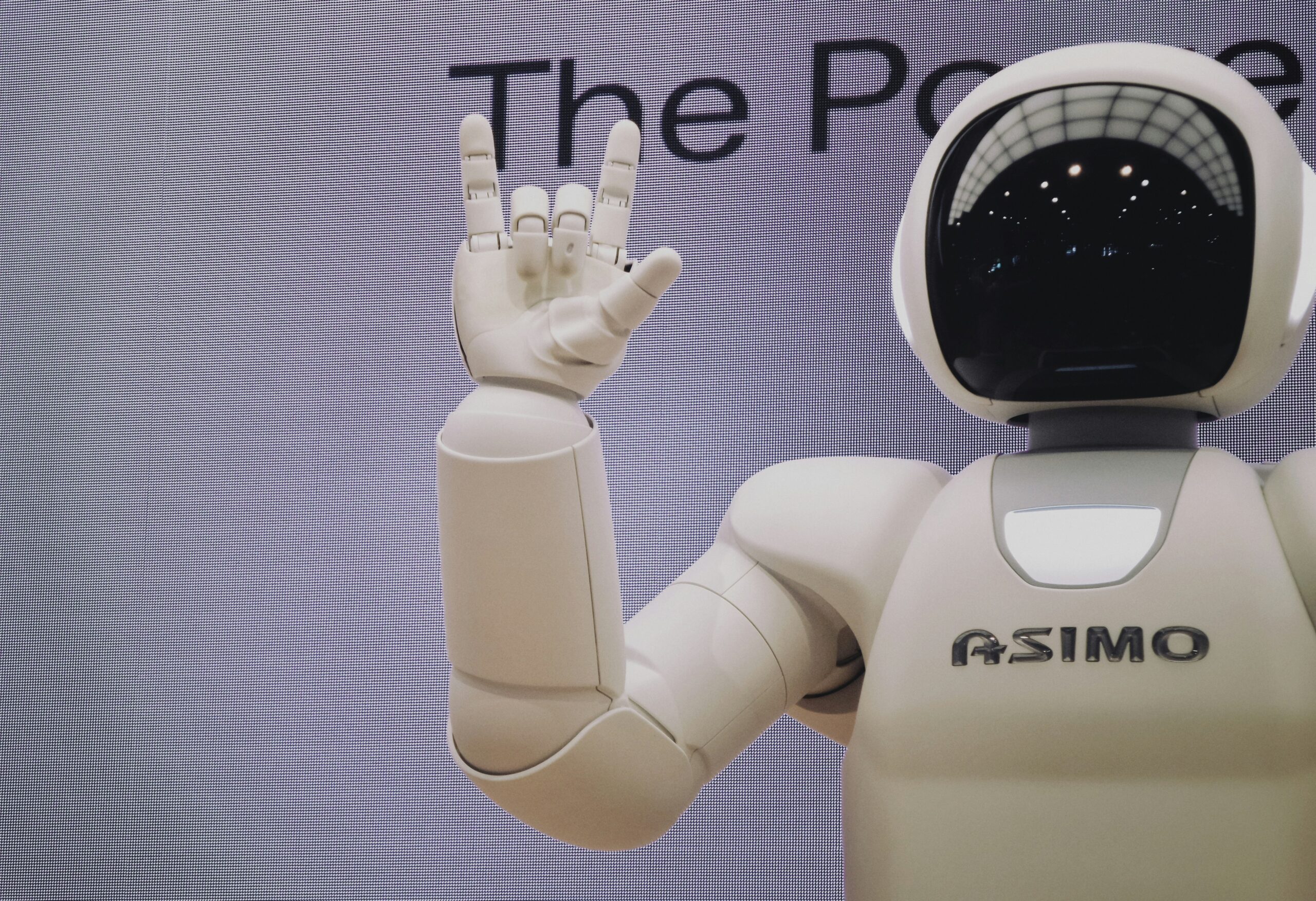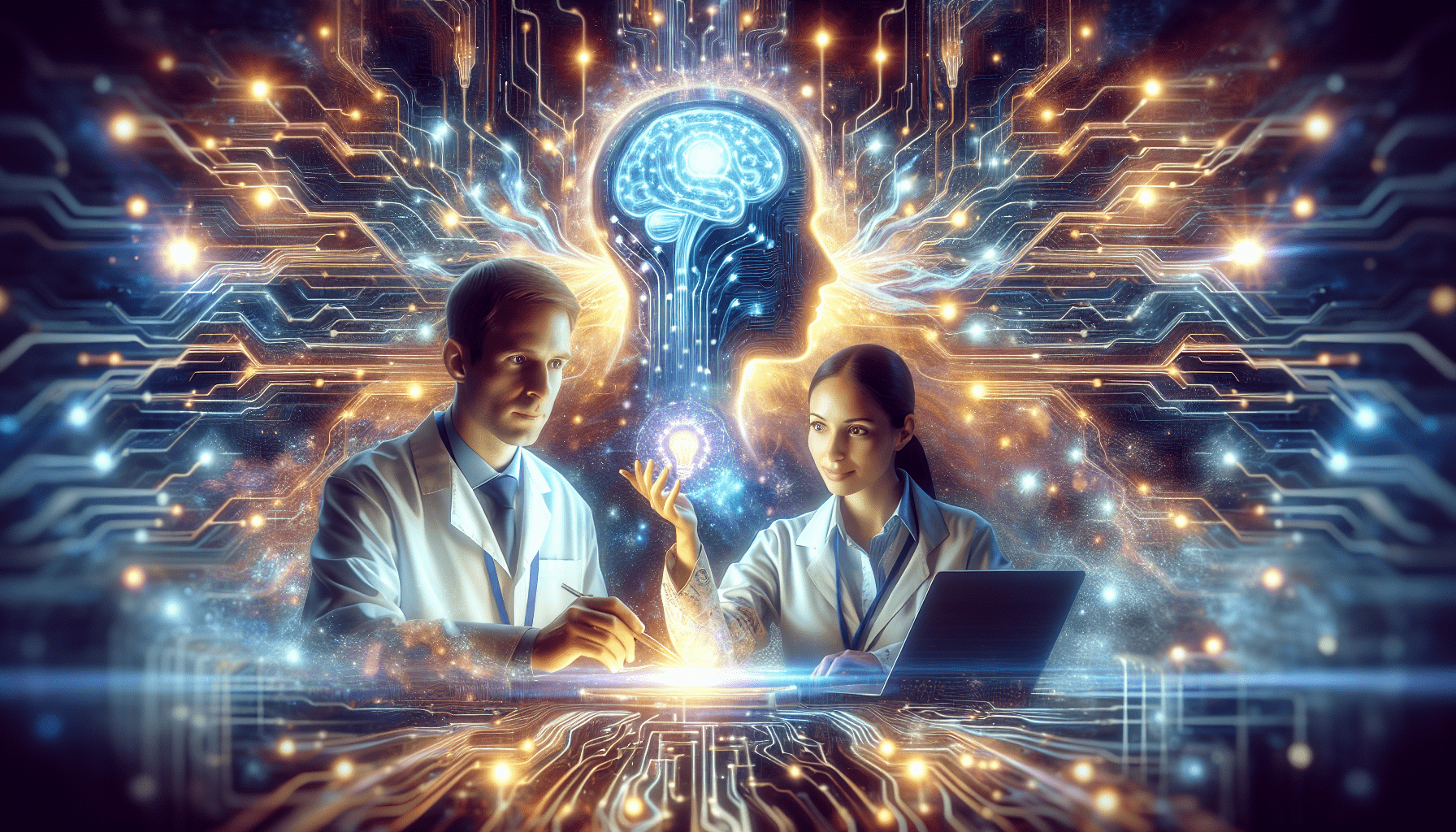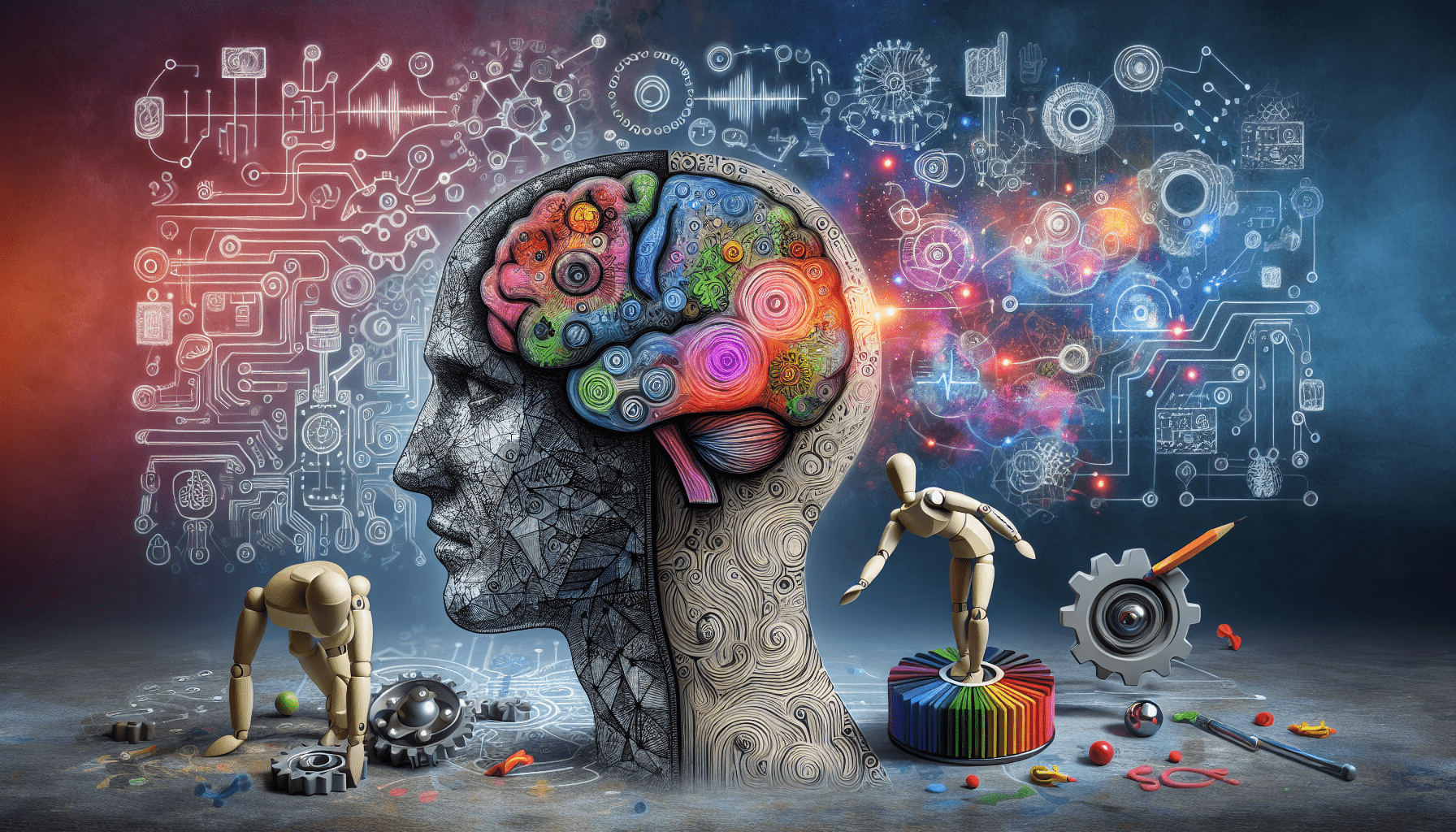Ready to embark on a fascinating journey into the world of Artificial Intelligence? In this article, you’ll explore the basics of AI, perfect for beginners like yourself. Whether you’re captivated by the idea of machines mimicking human intelligence or simply curious to understand the technology shaping our future, this article will provide you with a friendly and approachable introduction to the fundamentals of AI. Get ready to uncover the wonders of this rapidly advancing field and discover how AI is changing the way we live, work, and interact with technology.

Definition of Artificial Intelligence
Understanding the concept of Artificial Intelligence
Artificial Intelligence (AI) refers to the creation and development of computer systems that possess the ability to perform tasks that would otherwise require human intelligence. It involves the study and implementation of intelligent behavior in machines. AI systems have the capability to analyze large amounts of data, learn from that data, and make informed decisions or predictions. They can also perceive their environment and adapt to changes, emulating human cognitive abilities such as problem-solving, learning, and understanding natural language.
Differentiating AI from human intelligence
While AI aims to replicate human intelligence, it is important to note that it is not synonymous with human intelligence. AI is designed to perform specific tasks and is limited to the scope of its programming. Human intelligence, on the other hand, encompasses a wide range of cognitive abilities, including reasoning, creativity, emotional intelligence, and consciousness. AI systems excel in areas that require computational power and data processing, while human intelligence is more diverse and flexible.
Key components of AI systems
AI systems consist of several components that work together to perform tasks. These include:
-
Data: The foundation of AI. Large amounts of data are processed and analyzed to extract meaningful information.
-
Algorithms: Mathematical models and instructions that enable machines to learn from data, make predictions, and perform tasks.
-
Computational Power: AI systems require significant computational resources to process and analyze complex datasets.
-
Training: AI models need to undergo a training process where they are exposed to data and learn patterns and relationships.
-
Inference: Once trained, AI models can make predictions or perform tasks based on new inputs or scenarios.
Overview of AI applications in various industries
Artificial Intelligence has made significant advancements in numerous industries. Here are a few examples:
-
Healthcare and Medicine: AI is being used to analyze medical imagery, diagnose diseases, develop personalized treatment plans, and improve patient outcomes.
-
Finance and Banking: AI is employed for fraud detection, risk assessment, algorithmic trading, and customer service chatbots.
-
Autonomous Vehicles: AI enables self-driving cars and vehicles to navigate and make decisions, enhancing safety and efficiency.
-
Customer Service and Chatbots: AI-driven chatbots provide automated customer assistance, addressing queries and offering personalized recommendations.
Artificial Intelligence is transforming various sectors, improving efficiency, accuracy, and decision-making processes.
History of Artificial Intelligence
Early developments and pioneers in AI
The origins of Artificial Intelligence can be traced back to the 1950s when the field of AI was first established. Pioneers such as Alan Turing, John McCarthy, and Marvin Minsky played crucial roles in laying the foundation of AI research and development. Early efforts focused on developing programs capable of mimicking human problem-solving skills and logical reasoning.
Milestones in AI research and technology
Over the years, several milestones and breakthroughs have propelled the field of AI forward. In 1956, the Dartmouth Conference marked the birth of AI as an official discipline. In 1997, IBM’s Deep Blue defeated chess grandmaster Garry Kasparov, showcasing the potential of AI in complex games. In recent years, advancements in Machine Learning and Deep Learning algorithms have driven significant progress in AI research and applications.
Impact of AI on society and economy
As AI technology continues to advance, its impact on society and the economy becomes more pronounced. AI is revolutionizing industries, improving efficiency, and driving innovation. However, concerns have been raised regarding the potential displacement of jobs, ethical considerations, and biases within AI systems. It is essential to strike a balance between technological advancements and societal well-being.
Current state and future trends of AI
AI is rapidly evolving, with new research and developments happening every day. Current trends include the increased adoption of AI in various industries such as healthcare, finance, and transportation. Natural Language Processing and Computer Vision are areas seeing significant advancements. Future trends may include the integration of AI with other technologies such as Internet of Things (IoT) and the emergence of more advanced AI models and algorithms.
Types of Artificial Intelligence
Narrow AI vs. General AI
Artificial Intelligence can be broadly categorized into Narrow AI and General AI. Narrow AI, also known as Weak AI, refers to AI systems that are designed to perform specific tasks or solve particular problems. They excel in their specialized domain but lack the ability to generalize knowledge. General AI, on the other hand, aims to replicate human intelligence and possess the ability to understand, learn, and perform any intellectual task that a human being can do. General AI is more speculative and currently remains a subject of ongoing research and development.
Machine Learning and Deep Learning
Machine Learning is a subset of AI that focuses on enabling machines to learn from and make predictions or decisions based on data. It uses algorithms to analyze patterns and relationships within datasets. Deep Learning is a subfield of Machine Learning that utilizes neural networks with multiple layers, allowing for the processing of complex and abstract features. Deep Learning has achieved impressive results in tasks such as image and speech recognition.
Supervised, Unsupervised, and Reinforcement Learning
In Machine Learning, there are different learning paradigms. Supervised Learning involves training models on labeled data, where the desired outputs are provided for each input. Unsupervised Learning, on the other hand, involves training models on unlabeled data to identify patterns and relationships independently. Reinforcement Learning utilizes an agent interacting with an environment, learning through trial and error to maximize rewards and achieve desired outcomes.
Natural Language Processing and Computer Vision
Natural Language Processing (NLP) focuses on enabling computers to understand, interpret, and generate human language. It plays a crucial role in applications such as chatbots, voice assistants, and language translation. Computer Vision involves teaching computers to understand and interpret visual information, enabling tasks such as object recognition, image classification, and autonomous driving. These areas of AI are evolving rapidly, opening up new possibilities for human-computer interaction.
AI Algorithms and Models
Understanding the basics of algorithms in AI
In AI, algorithms are the mathematical models and instructions that allow machines to process data, learn from patterns, and make predictions or decisions. Common AI algorithms include decision trees, random forests, support vector machines, and neural networks. These algorithms are designed to handle specific types of data and tasks, and their selection depends on the problem at hand.
Commonly used AI models and their applications
Various AI models are employed to tackle different tasks and domains. For example, Convolutional Neural Networks (CNNs) are commonly used for image recognition and computer vision tasks. Recurrent Neural Networks (RNNs) are suitable for sequence-related tasks, such as natural language processing and speech recognition. Generative Adversarial Networks (GANs) are utilized for tasks such as image generation and style transfer.
Exploration of neural networks and their architectures
Neural networks are a critical component of AI systems, inspired by the structure and functioning of the human brain. They consist of interconnected nodes called neurons that process and transmit information. Neural networks can have various architectures, including feedforward neural networks, recurrent neural networks, and convolutional neural networks. These architectures are designed to handle different types of data and solve different types of problems.
Analyzing the training and inference processes in AI
In AI, training and inference are integral processes. During the training phase, AI models are exposed to labeled data, and the algorithms adjust their parameters to minimize errors and optimize performance. This process involves forward propagation, where inputs pass through the network, and backward propagation, where errors are backpropagated to adjust weights and biases. In the inference phase, trained models make predictions or perform tasks based on new inputs or scenarios.

Ethics and AI
Ethical considerations in developing AI systems
As AI technology continues to advance, ethical considerations become increasingly important. Developers and researchers must consider potential negative impacts on individuals, society, and the environment. Ethical aspects include privacy, fairness, accountability, transparency, and the potential biases and unintended consequences embedded in AI systems. Robust ethical frameworks and guidelines need to be established to ensure responsible and ethical development and deployment of AI.
Bias and fairness issues in AI algorithms
AI algorithms can be susceptible to biases, reflecting the biases present in the data they are trained on. This raises concerns regarding fairness and the potential for discrimination. Biases in AI algorithms can have significant consequences in various areas such as criminal justice, hiring practices, and loan approvals. It is essential to detect and address biases, promote diversity in AI research and development, and ensure fairness and equity in AI systems.
AI and privacy concerns
AI systems often rely on large amounts of data to operate effectively. This has sparked concerns about privacy and the collection, storage, and use of personal data. Ensuring that data privacy is maintained and user consent is obtained is crucial. Regulations and policies, such as the General Data Protection Regulation (GDPR), play a crucial role in protecting individuals’ privacy rights.
The role of human oversight in AI
While AI systems can automate processes and make decisions, human oversight remains critical. Humans are responsible for setting ethical boundaries, ensuring accountability, and managing the potential risks associated with AI. Human involvement is necessary to interpret AI-generated results, identify and address biases, and make nuanced decisions that go beyond the capabilities of AI systems. Collaboration between humans and AI is crucial for responsible and beneficial AI deployment.
Applications of Artificial Intelligence
AI in healthcare and medicine
AI has significant potential to transform healthcare and medicine. It can assist in diagnosing diseases, analyzing medical imagery, designing personalized treatment plans, and predicting patient outcomes. AI-powered systems can quickly process vast amounts of medical data, helping healthcare professionals make more accurate and timely decisions. It also has the potential to improve patient monitoring, drug discovery, and streamline administrative tasks.
AI in finance and banking
The finance and banking industry can benefit immensely from AI. AI algorithms can analyze large volumes of financial data, detect patterns, and make predictions for risk assessment and fraud detection. Chatbots powered by AI can provide efficient customer service, answering queries and handling transactions. AI-driven algorithms can also assist in algorithmic trading, optimizing investment portfolios, and identifying potential market opportunities.
AI in autonomous vehicles
Autonomous vehicles rely heavily on AI technology for navigation, obstacle detection, decision-making, and overall control. AI algorithms process sensor data, such as visual, radar, and lidar inputs, to understand the vehicle’s surroundings and navigate safely. Machine Learning techniques enable the vehicle to learn from past experiences and improve performance. Autonomous vehicles have the potential to revolutionize transportation, offering increased safety, efficiency, and accessibility.
AI in customer service and chatbots
Customer service can be enhanced through the use of AI-powered chatbots. These chatbots can provide instant responses to customer inquiries, address common issues, and offer personalized recommendations. Natural Language Processing allows chatbots to understand and interpret human language, making interactions more conversational and effective. AI-driven customer service systems can handle a large volume of customer queries simultaneously, improving customer satisfaction and reducing response times.

AI Tools and Technologies
Popular AI frameworks and libraries
There are several popular AI frameworks and libraries that provide developers with the necessary tools and resources to build AI applications. Examples include TensorFlow, PyTorch, Keras, and scikit-learn. These frameworks offer pre-built modules and functions for tasks such as data preprocessing, model training, and evaluation, making it easier for developers to implement AI algorithms.
AI development platforms and APIs
AI development platforms and APIs provide a higher-level interface for developers to build and deploy AI applications. Google Cloud AI Platform, Microsoft Azure AI, and Amazon AWS AI services offer a range of tools and APIs for tasks such as natural language processing, speech recognition, and image analysis. These platforms simplify the process of integrating AI capabilities into applications, enabling developers to leverage pre-trained models and achieve faster development cycles.
Cloud-based AI services
Cloud-based AI services have made AI more accessible by providing on-demand computing resources and pre-configured AI frameworks and libraries. Cloud platforms such as Google Cloud, Microsoft Azure, and Amazon Web Services offer scalable infrastructure, making it easier to train and deploy AI models. Cloud services also provide cost-effective solutions for organizations, eliminating the need for upfront investments in hardware and infrastructure.
Hardware requirements for AI applications
AI applications often require significant computational power and specialized hardware to process and analyze large datasets. Graphics Processing Units (GPUs) are commonly used for accelerating computations in AI, as they excel in parallel processing. Additionally, specialized hardware like Field Programmable Gate Arrays (FPGAs) and Application-Specific Integrated Circuits (ASICs) are being developed to meet the increasing demands of AI workloads.
Challenges and Limitations of AI
Data quality and availability
The quality and availability of data pose significant challenges for AI systems. AI algorithms heavily rely on large, diverse, and high-quality datasets to learn patterns and make accurate predictions. Access to such datasets can be limited, particularly in certain domains or industries. Additionally, biases in the data can lead to biased AI models, highlighting the importance of data quality and diversity.
Lack of interpretability in AI models
Interpreting how AI models make decisions can be challenging, especially with complex Deep Learning models. The black-box nature of AI models can raise concerns about transparency and accountability. Understanding the reasoning behind AI predictions and decisions is crucial, particularly in areas such as healthcare, where explainability is essential. Research is being conducted to develop techniques and methods to improve the interpretability of AI models.
Ethical and legal challenges
AI technology poses ethical and legal challenges that need to be addressed. The potential misuse of AI, such as in surveillance systems or autonomous weapons, raises ethical concerns. Intellectual property rights and liability issues associated with AI-generated content or decisions also need careful consideration. Developing robust ethical frameworks, regulatory policies, and international collaborations are crucial for mitigating these challenges.
Job displacement and societal impact
The deployment of AI systems has raised concerns about job displacement and its impact on society. As AI technology automates certain tasks, there is the potential for job losses in certain industries. However, there is also the prospect of new job creation, as AI enables the development of innovative products and services. Skill development, retraining programs, and social safety nets are necessary to ensure that the benefits of AI are distributed equitably and to mitigate any negative societal effects.

Getting Started with AI
Recommended learning resources for AI beginners
For beginners looking to start their AI journey, there are several resources available that provide a solid foundation. Websites like Coursera, edX, and Udacity offer online courses on AI fundamentals and specific topics such as Machine Learning and Deep Learning. Books like “Artificial Intelligence: A Modern Approach” by Stuart Russell and Peter Norvig serve as comprehensive references for AI concepts and techniques.
Online courses and tutorials for AI
Online courses and tutorials are great ways to learn AI concepts and gain practical experience. Platforms like Coursera, Udacity, and Khan Academy offer a wide range of courses, from introductory to advanced levels. These courses cover topics such as Machine Learning, Deep Learning, Natural Language Processing, and Computer Vision. Tutorials and code repositories on platforms like GitHub provide hands-on experience in implementing AI algorithms.
Hands-on projects to practice AI skills
Practicing hands-on projects is an effective way to gain practical experience and deepen understanding. Kaggle, a platform for data science competitions, offers datasets and challenges for participants to solve real-world problems using AI techniques. Open-source projects, such as TensorFlow Playground and Fast.ai, provide interactive environments to experiment and build AI models. Building personal projects and participating in AI hackathons can also enhance practical skills.
Building a career in Artificial Intelligence
AI offers exciting career prospects for individuals interested in this field. Roles such as AI Engineer, Machine Learning Engineer, and Data Scientist are in high demand. To build a career in AI, it is important to acquire a strong foundation in mathematics, statistics, and programming. Pursuing higher education in AI-related disciplines or gaining practical experience through internships and projects can provide a competitive edge. Continuous learning and staying updated with the latest advancements are crucial for success in this rapidly evolving field.
Future of Artificial Intelligence
Emerging trends in AI research
AI research is constantly evolving, driven by emerging technologies and scientific advancements. Current trends include the exploration of Explainable AI, Federated Learning, and Transfer Learning. Explainable AI aims to develop models that provide transparent explanations for their predictions and decisions. Federated Learning enables training AI models on decentralized data sources while preserving privacy. Transfer Learning focuses on transferring knowledge from one task to another, allowing models to learn more efficiently with limited data.
Potential advancements and breakthroughs
The future of AI holds immense potential for advancements and breakthroughs. Areas such as Quantum AI, Human-AI Collaboration, and AI Robotics present exciting possibilities. Quantum AI explores the utilization of quantum computing to boost AI capabilities, solving complex problems efficiently. Human-AI Collaboration aims to develop AI systems that can work cooperatively and seamlessly with humans, maximizing human potential. AI Robotics combines AI with robotics, enabling intelligent and autonomous systems with real-world applications.
Impact of AI on various industries
AI is poised to have a significant impact on various industries across the board. It is expected to revolutionize healthcare, enabling earlier disease detection, personalized medicine, and improved patient care. In finance and banking, AI can enhance risk management, fraud detection, and customer service. AI-driven autonomous vehicles will transform transportation, making it safer, efficient, and environmentally friendly. These are just a few examples of the potential impact AI can have on industries, and the possibilities are endless.
Ethical considerations for future AI development
As AI continues to advance, ethical considerations become increasingly important. The development and deployment of AI technologies must be guided by ethical frameworks that prioritize fairness, privacy, accountability, and transparency. Regulation and policy development need to keep pace with technological advancements to address potential risks and ensure that AI is used responsibly. Collaboration between stakeholders, including governments, organizations, and the public, is crucial for establishing ethical practices and minimizing potential harm.
In conclusion, Artificial Intelligence is a rapidly growing field that has the potential to revolutionize numerous industries. Understanding the basics of AI, its history, different types, applications, and future trends is essential for grasping its impact and potential challenges. As AI technology evolves, it is crucial to ensure responsible development, address ethical considerations, and embrace collaboration between humans and AI to maximize the benefits and mitigate any negative impacts.







Leave a Reply